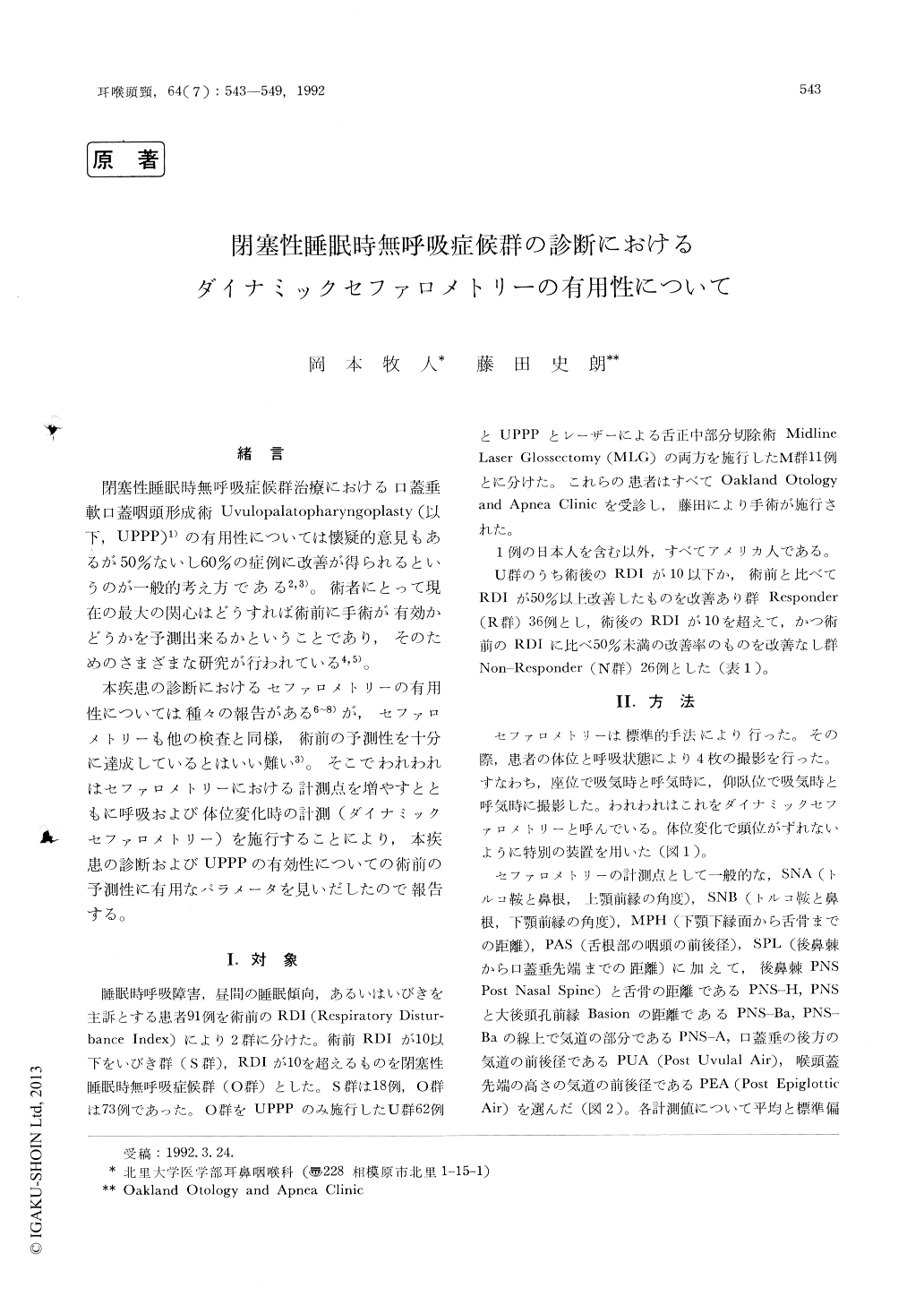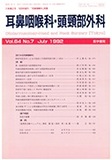Japanese
English
- 有料閲覧
- Abstract 文献概要
- 1ページ目 Look Inside
緒言
閉塞性睡眠時無呼吸症候群治療における口蓋垂軟口蓋咽頭形成術Uvulopalatopharyngoplasty (以下,UPPP)1)の有用性については懐疑的意見もあるが50%ないし60%の症例に改善が得られるというのが一般的考え方である2,3)。術者にとって現在の最大の関心はどうすれば術前に手術が有効かどうかを予測出来るかということであり,そのためのさまざまな研究が行われている4,5)。
本疾患の診断におけるセファロメトリーの有用性については種々の報告がある6〜8)が,セファロメトリーも他の検査と同様,術前の予測性を十分に達成しているとはいい難い3)。そこでわれわれはセファロメトリーにおける計測点を増やすとともに呼吸および体位変化時の計測(ダイナミックセファロメトリー)を施行することにより,本疾患の診断およびUPPPの有効性についての術前の予測性に有用なパラメータを見いだしたので報告する。
Cephalometry is one of routine testing methods for diagnosis of obstructive sleep apnea syndrome, but it does not always provide entirely accurate prediction for postoperative course. We therefore performed dynamic cephalometry which was obtained from shifting the patient's posture in different respirtory phases.
The current study revealed that MPH, PNS-H, SPL and PUA were useful as parameters for the allocation of patients to apnea and snoring gro-ups. PNS-Ba, SPL and PUA were useful for prediction of therapeutic effect of UPPP. Statisti-cal analyses of findings from dynamic cephalo-metric study demonstrated significant differences in SPL and PUA between UPPP responder and non-responder group.

Copyright © 1992, Igaku-Shoin Ltd. All rights reserved.


